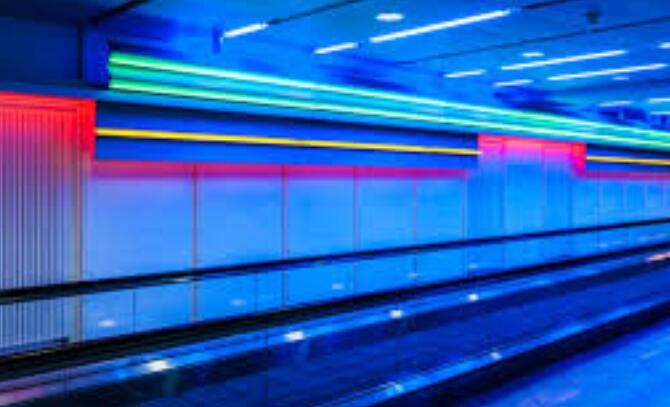The choice between neon lights and LED lights depends on various factors, including the intended use, cost, energy efficiency, lifespan, and aesthetic preferences. Here's a detailed comparison to help determine which might be better for your specific needs:

Neon Lights
Advantages:
-
Aesthetic Appeal: Neon lights have a distinctive, vibrant glow that is often associated with a retro or vintage look. They are commonly used for artistic signage and decorative purposes.
-
Wide Viewing Angle: Neon lights emit light in all directions, making them visible from various angles, which is beneficial for signage.
Disadvantages:
-
Energy Efficiency: Neon lights are less energy-efficient compared to LEDs. They consume more power to produce the same amount of light.
-
Heat Production: They generate more heat, which can be a concern in enclosed spaces.
-
Durability: Neon lights are made from glass tubes that are fragile and can break easily. They are also affected by temperature changes and weather conditions.
-
Lifespan: The lifespan of neon lights is generally shorter than that of LEDs. They require more frequent maintenance and replacement.
-
Initial Cost: While the initial cost of neon lights can be lower, the long-term costs are higher due to higher energy consumption and maintenance.
LED Lights
Advantages:
-
Energy Efficiency: LEDs are highly energy-efficient, consuming significantly less power than neon lights. This leads to lower electricity bills and a reduced environmental footprint.
-
Durability: LEDs are more robust and durable. They are not made from glass, making them less prone to breakage.
-
Lifespan: LED lights have a much longer lifespan, often lasting tens of thousands of hours.
-
Versatility: LEDs are available in a wide range of colors and can be programmed to change colors and patterns, offering greater versatility for various applications.
-
Low Heat Production: LEDs produce very little heat, making them safer to use and more suitable for enclosed or sensitive spaces.
-
Low Maintenance: Due to their long lifespan and durability, LEDs require less maintenance over time.
Disadvantages:
-
Initial Cost: The upfront cost of LED lights can be higher than that of neon lights. However, this cost is often offset by the energy savings and longer lifespan.
-
Aesthetic Differences: Some people prefer the classic look of neon lights and may find LEDs to be less authentic in replicating that vintage glow.
Conclusion
LED lights are generally better for most modern applications due to their energy efficiency, durability, long lifespan, and low maintenance requirements. They are ideal for both indoor and outdoor lighting, signage, and decorative purposes where energy savings and longevity are important.
Neon lights, on the other hand, are preferred for their unique aesthetic appeal and are often used in artistic and decorative signage where a traditional or vintage look is desired.
The best choice depends on your specific needs and preferences, balancing factors such as energy efficiency, cost, durability, and the desired visual effect.


